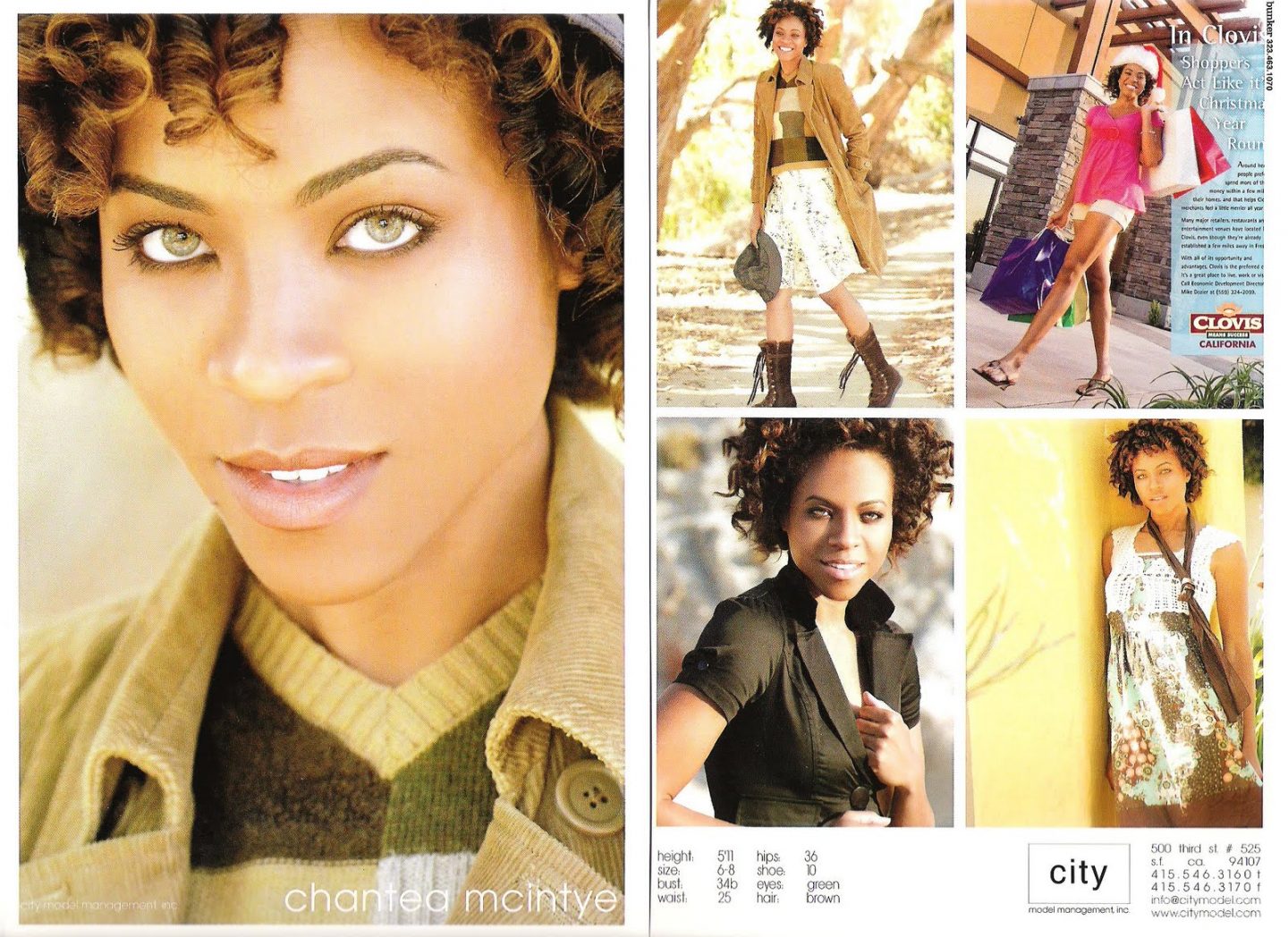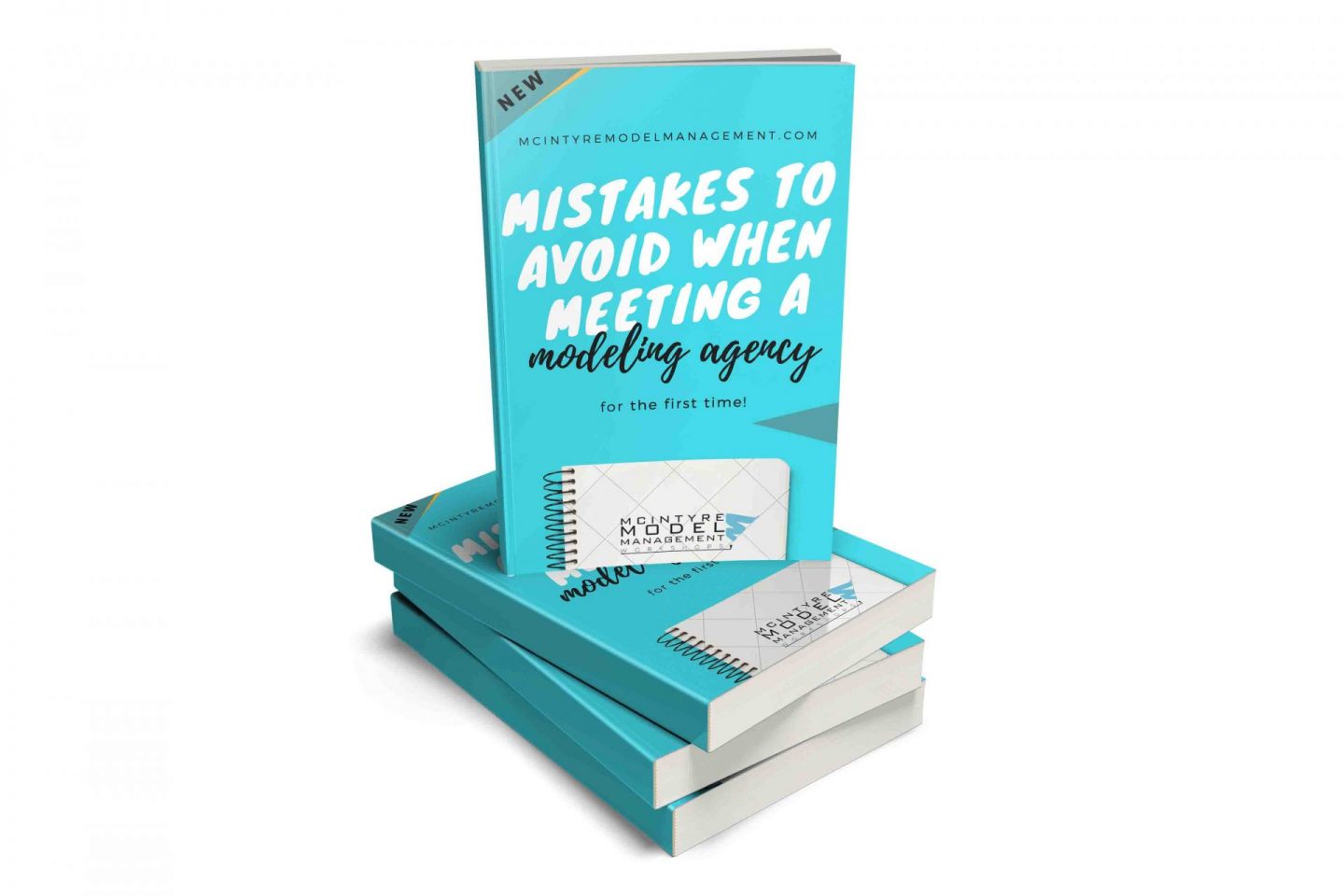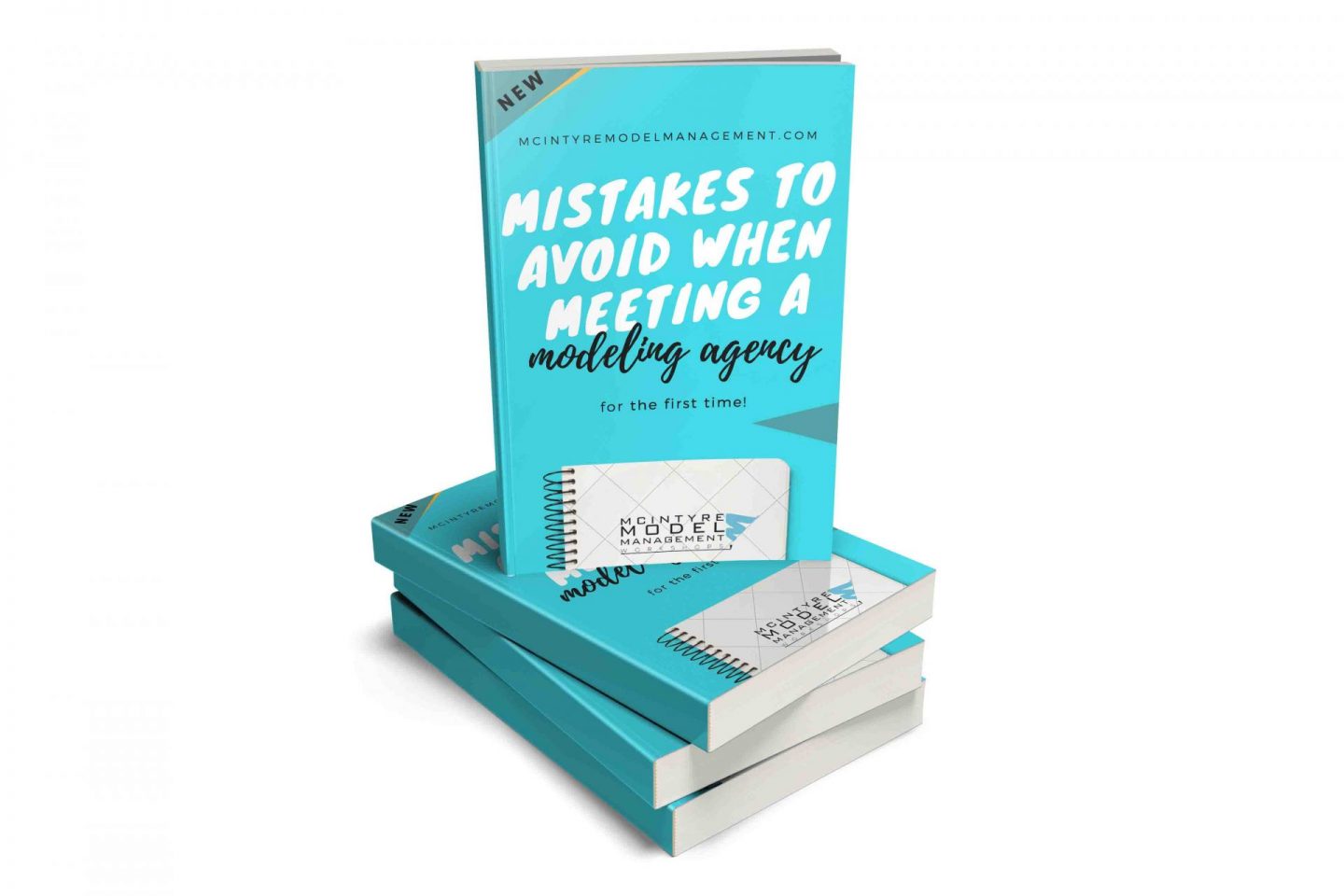
I had the incredible privilege of modeling full time for almost ten years with agency representation out of San Francisco, Los Angeles, North Carolina, and Arizona. Since retiring as a full-time model I opened up my own modeling agency in Central California called McIntyre Model Management.
I have learned a lot, both as a full-time model and as a modeling agency director/owner. The question I get the most is “how do I become a model?” The second question I get the most is “how do I get my kids into modeling?”
Admittedly, I had the same questions before I began modeling and clearly now the topic is not a mystery to me any longer.
The short answer is that becoming a model takes a little bit of luck + a little bit of persistence + a little bit of practice + and a lot of great timing.
But the long answer is:
- Decide what type of model you want to become
- Practice and develop your skills
- Apply to local and national agencies
I have included an in depth look at all of these steps. But feel free to use the links above to jump ahead to the part you might be most interested in. At the very end, I have included my e-book on mistakes I see most models make when they apply to agencies. As a modeling agency owner for over a decade you can imagine the things I see. I hope you aren’t making the same mistakes when you submit too.
Decide on the type of model you want to become
There are probably more types of models that you can imagine. You can be a parts model, which means you can be signed to an agency to model your hand, foot, lip, leg, arm, hair… I think you get the picture. You can even be a body double in a movie. The possibilities are endless so it’s important that you understand your goals when pursuing a modeling career.
High Fashion
High Fashion models are the models you see in high profile magazines like Vogue. It’s typically the first type of model people think of when they aspire to become a model mostly because this type of modeling feels the most glamourous.
High fashion models are normally at least 5’9” tall. Most female high fashion models are not taller than 6 feet tall. High fashion models generally have a very slim physique and standard high fashion model measurements are a 34-inch bust (the circumference of the chest), 24-inch waist (the circumference of the smallest part of the waist) and 34-inch hip (the circumference of the largest part of the hips and but).
High fashion models often have a unique or very distinct look. Many designers love to feature models with freckles or strikingly beautiful patterns to the skin. Not all high fashion models are traditionally beautiful but all have stunning features that make the observer pause for a longer look.
To be a successful high fashion model you generally need to be tall, slim, have great skin and teeth, and striking features.
High fashion modeling is very easily the most competitive sector of the modeling industry. The good news is that there are several types of models and if you keep reading you are very likely to discover your niche in this competitive field.
Commercial Print
Commercial print models are what you most see in the Sunday paper, catalogs and online ads. All Old Navy, Target and JC Penney models would classify as commercial print models. This type of model is generally perceived as less glamorous as high fashion but can be very lucrative.
Commercial print models vary in height, size, and age. Commercial print is the most general category of modeling and also arguably as competitive as high fashion. To be a commercial print model you need to have a proportional body shape. It is not required to be as slim as high fashion and runway models in commercial print, but body proportion is very important. Mamy commercial print models have measurements outside the standard model measurement of 34 – 24 – 34. Commercial print models can be petite, plus or slightly above standard model size.
Runway
Runway models are seen in person and video events walking in a variety of clothes.
Most often runway models are at least 5’9” and have the same measurements as high fashion models. Slim measurements are most essential in runway modeling as many times the clothes are designed to fit a model standard well before the models are selected for the fashion show. Models are chosen by their ability to feature the designer’s clothes and compliment the vision of the designer.
Runway models are often trained to master the catwalk and dedicate many hours to mastering a smooth effortless walk to ensure a successful runway career. After walking in a runway show, the most successful models will often land the editorial shoot for high profile designers which is every model’s dream.
There are many venues for walking the runway, from regional fashion weeks like New York, Miami, and Paris, to local department stores.
Note – Many brands are expanding their consumer market and therefore broadening the type of models they hire in fashion shows to include plus, petite and even differently-abled models.
Glamour
Glamour models are generally curvier and have incredible proportions but don’t typically fit the model standard size. Clients that hire models in this category can include Maxim Magazine, Guess clothing to name a few.
Many aspiring models will start in the glamour category although it is unnecessary. In fact, I would encourage aspiring models to enter this category with caution as most of the models booking Guess and Maxim have a very diverse portfolio. If all the photos in a portfolio skew toward glamour you may be limiting your potential to work with a variety of brands.
Fitness & Fit
Many brands are looking to hire models who have strong toned bodies. To be a fitness model you must have well-defined abs, legs, and arms. Height does not play as strong as a factor in the fitness category, but proportionality does. To become a fitness model many people will hire a personal trainer to provide objective feedback on how to achieve the best overall fit body.
Fit models are different than fitness models. The difference is that a fit model’s job is to try on clothes so a designer can see how the clothes will fit. One can be a fit model for a runway show or a commercial line. Fit models need to maintain the same measurements year around.
Additional types of models
Truly the list of types of models are endless. I did not go into great detail about “parts models” who model body parts like hands, feet, and legs, etc., or children models, mature models, petite models, or promotional models who work at live events (think ring girls and the gorgeous woman who greeted you at a high-end event.) Generally speaking, if you have the desire, willingness to invest in your overall look, and live in the right geographic area there is a type of modeling that you can purse.
Steps to Become a Model
Now that you know the types. Here are the steps to getting your next big break!
1. Search for reputable agencies that meet your needs
Not all agencies represent all types of models. You will have to find the right fit for you as you pursue becoming a model. I often advise that you look at the group of models that the agency represents and ask yourself.
- Do I fit in here? Does this agency represent the type of modeling I want to pursue?
- Am I close enough to get to this location geographically if asked to arrive in a few hours?
- Does this agency already have someone with my look?
If the answer to the first two is yes, then apply. If the answer to the last question is no, then DEFINITELY apply! Finding the right agency is a little like blind dating. You send in your photos and hope you are what they are looking for.
If the agency doesn’t get back to you right away. Don’t get discouraged, try again in a few months. Often there is a change in staffing. And sometimes a new agent will find your look more favorable then the other agents did. And sometimes the girl who had your look is no longer with the agency and then it’s your time to slide right in. Moral of the story… don’t give up.
2. Applying to agencies
Once you have selected your agency, check out their application requirements. Most agency website’s outline how they want you to apply in order to become one of their models. Most require photos submissions either online or in person, and some even require a short video. Take a look at their website and follow the directions carefully.
Please Note
- Wear very minimal to no makeup for both online and in-person submissions.
- Spend ample time finding the right light for your submission photos. Outside lighting is best, but near a window is also great.
- Remember that agents make their decisions very quickly so work to stand out both in confidence and personal style.
3. Show up to open calls or submit online
What to wear to at open calls
- Some agencies ask for a photo in a bikini for adult female models. So when preparing your audition photos, spend a lot of time thinking about what cut of swimsuit will look best on you. As mentioned before, agents will make a decision in a matter of moments whether you are a good fit for them. So make that first impression count.
- At the actual casting, wear form-fitting jeans (black is preferred) and a simple top. The idea is that you want to show the agent that you can be effortlessly beautiful. Style yourself as if you are a model who got caught by paparazzi heading to a coffee shop. Not like a model who is ready for her photoshoot. They want to make sure that you can turn heads even without trying. Think.. No makeup makeup!
- It is best to prepare for an open call by packing your favorite heels, and slipping them on just before you get to the door. It’s important to choose something you can walk comfortably in just in case they ask you to do your runway walk.
4. Develop your skills by practicing in the mirror and doing trade shoots
Speaking of a runway walk. Practice! Modeling is a job and even the most gorgeous woman practices in front of a mirror on how to create a killer pose for her next shoot.
Watch YouTube and videos like the one I created below, to learn tips and tricks about how to look your best on the runway and when taking photos.
5. Develop a social media presence
The thing I love most about social media is that it gives you the power to create your own brand even if an agency is not smart enough to hire you. With effort and research, you can learn to take your own photos and develop your own market. And yes you can get paid well on modeling on Instagram too.
The benefit is that as you grow your social media exposure, often that momentum will help you get signed by an agency. Many top modeling agencies will link the Instagram accounts of their models on their websites so choose the photos that you share on your page carefully.
Myths about becoming a model
Myth # 1 – Sometimes you do have to pay
It really irks when people say you won’t have to pay. I have come out of pocket many times working as a legit full-time model. Potential fees will include, your first portfolio shoot, drop-in runway training, drop-in acting classes, and sometimes agencies charge a website fee.
You have to remember that agencies make money when you make money by taking 20% of each job you book with them. So most agencies will not pay for your runway class. And some agencies will take the cost of your first portfolio shoot from your first paycheck. If you are lucky your agency will work to get your first portfolio shoot a test shoot, which means it will cost you nothing, but that rarely happens in my experience.
The warnings that people give when they say that “you don’t have to pay” are because you definitely don’t have to pay thousands. And be cautious when any agency asks you for money upfront. It is hard to tell if the agent is legit if it is a boutique agency. But do some research and see if they are actually booking jobs or if they are a school.
No shade to modeling schools, just understand what you are paying for.
Myth #2 You have to be tall
Total myth! There are so many types of models as I mentioned earlier. And although you don’t have to be tall, you do have to be good looking. Great teeth, hair, skin, hands, and proportions will make up for height. And confidence will make up for many other shortcomings.
Myth #3 – You have to be experienced
You can be totally new to the industry and get signed with a big agency. But I would not recommend that you be new to the craft. In fact, I would advise that you do several test shoots and/or several runway shows before you look for an agency. Many people fantasize about the moment when all eyes are on you, but if you have never done it before you will be terrified. So practice!
I can’t stress enough the importance of not giving up, developing your skill, and evaluating your willingness and availability to travel. Modeling is a grueling and glamorous profession. Best of luck as you pursue this career that has been so good to me.
If you would like to learn a bit more about the most common mistakes models make when submitting to modeling agencies and how to avoid them, please check out my e-book here.

Let me know in the comments if you have any additional questions!
xo- Chantea
Please also check out my blog post review of John Benton Model fitness for tips on how to achieve a model physique.
